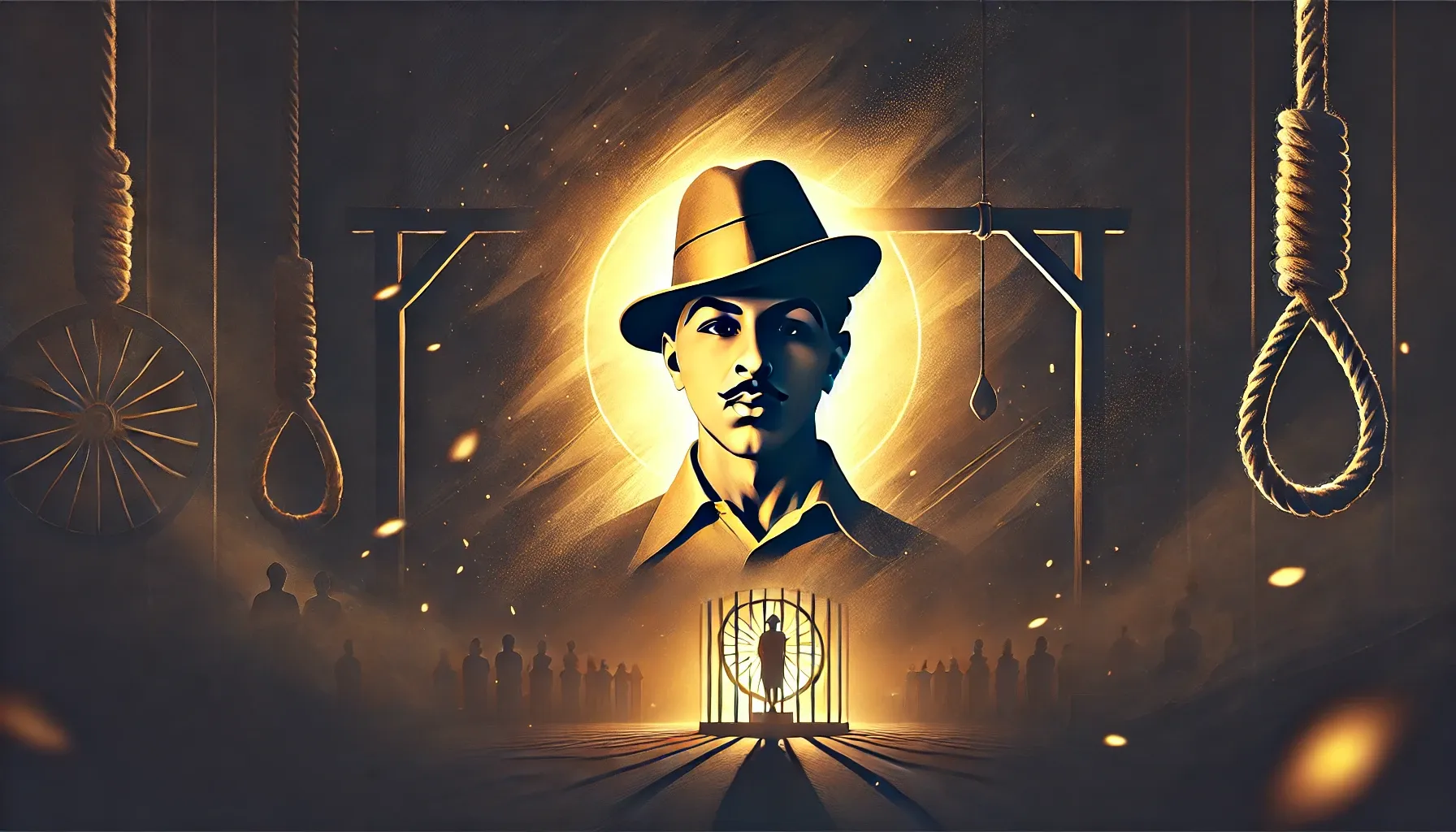UPSC
Exam Nugget
Shaheed Diwas: Legacy of Bhagat Singh
Last Updated
23rd March, 2025
Date Published
22nd March, 2025
Share This Post With Someone

Context:
This analysis explores the significance of Shaheed Diwas, observed annually on March 23, commemorating the execution of Bhagat Singh, Sukhdev Thapar, and Shivaram Rajguru in 1931. The piece details their roles in the Lahore Conspiracy Case and their revolutionary contributions to India’s freedom struggle, offering key historical insights as of March 23, 2025.
- Shaheed Diwas: Observed on March 23 every year in India to honor the martyrdom of Bhagat Singh, Sukhdev Thapar, and Shivaram Rajguru, executed in 1931 by the British for their revolutionary activities.
- Execution Details: The trio was hanged on March 23, 1931, in Lahore Central Jail, a day earlier than the scheduled March 24, for their role in the Lahore Conspiracy Case; their remains were secretly cremated on the Sutlej River banks.
- Lahore Conspiracy Case: Stemmed from the 1928 assassination of British police officer John Saunders, mistakenly killed instead of Superintendent James Scott, as revenge for Lala Lajpat Rai’s death after a brutal lathi charge.
- Lala Lajpat Rai’s Death: On October 30, 1928, Rai died from injuries sustained during a protest against the Simon Commission, sparking outrage and motivating Bhagat Singh and his associates to act.
- Assembly Bombing: On April 8, 1929, Bhagat Singh and Batukeshwar Dutt threw non-lethal bombs in the Central Legislative Assembly in Delhi, aiming to protest repressive laws and amplify their call for independence with the slogan “Inquilab Zindabad.”
- Revolutionary Ideology: Bhagat Singh, a socialist, sought “azaadi” not just from British rule but also from poverty, untouchability, communal strife, and exploitation, reflecting a broader vision for India.
- Public Reaction: Their execution at age 23 sparked widespread anger, inspiring youth to join the freedom struggle; Gandhi faced criticism for not doing more to save them, despite his diplomatic efforts with Viceroy Irwin.
- Hunger Strike: In jail, the trio launched a hunger strike for better treatment as political prisoners, gaining public sympathy; Jatin Das’s death after 63 days intensified support.
- Historical Significance: Their sacrifice fueled revolutionary zeal, with Bhagat Singh’s writings and slogans like “They may kill me, but they cannot kill my ideas” enduring as symbols of resistance.
Key Terms:
- Shaheed Diwas: March 23, commemorating the martyrdom of Bhagat Singh, Sukhdev, and Rajguru.
- Lahore Conspiracy Case: 1928-31 legal case against revolutionaries for Saunders’ assassination.
- Inquilab Zindabad: Slogan meaning “Long live the revolution,” coined by Bhagat Singh.
- Lala Lajpat Rai: Nationalist leader whose death in 1928 spurred revolutionary action.
- Simon Commission: 1928 British panel to review India’s governance, opposed by Indians.
- Central Legislative Assembly: British India’s legislative body, bombed in 1929 by revolutionaries.
- Hindustan Socialist Republican Association (HSRA): Revolutionary group led by Bhagat Singh advocating socialism and independence.
Link To The Original Article – https://indianexpress.com/article/upsc-current-affairs/upsc-essentials/knowledge-nugget-shaheed-diwas-bhagat-singh-lahore-conspiracy-upsc-prelims-exam-2025-9899919/